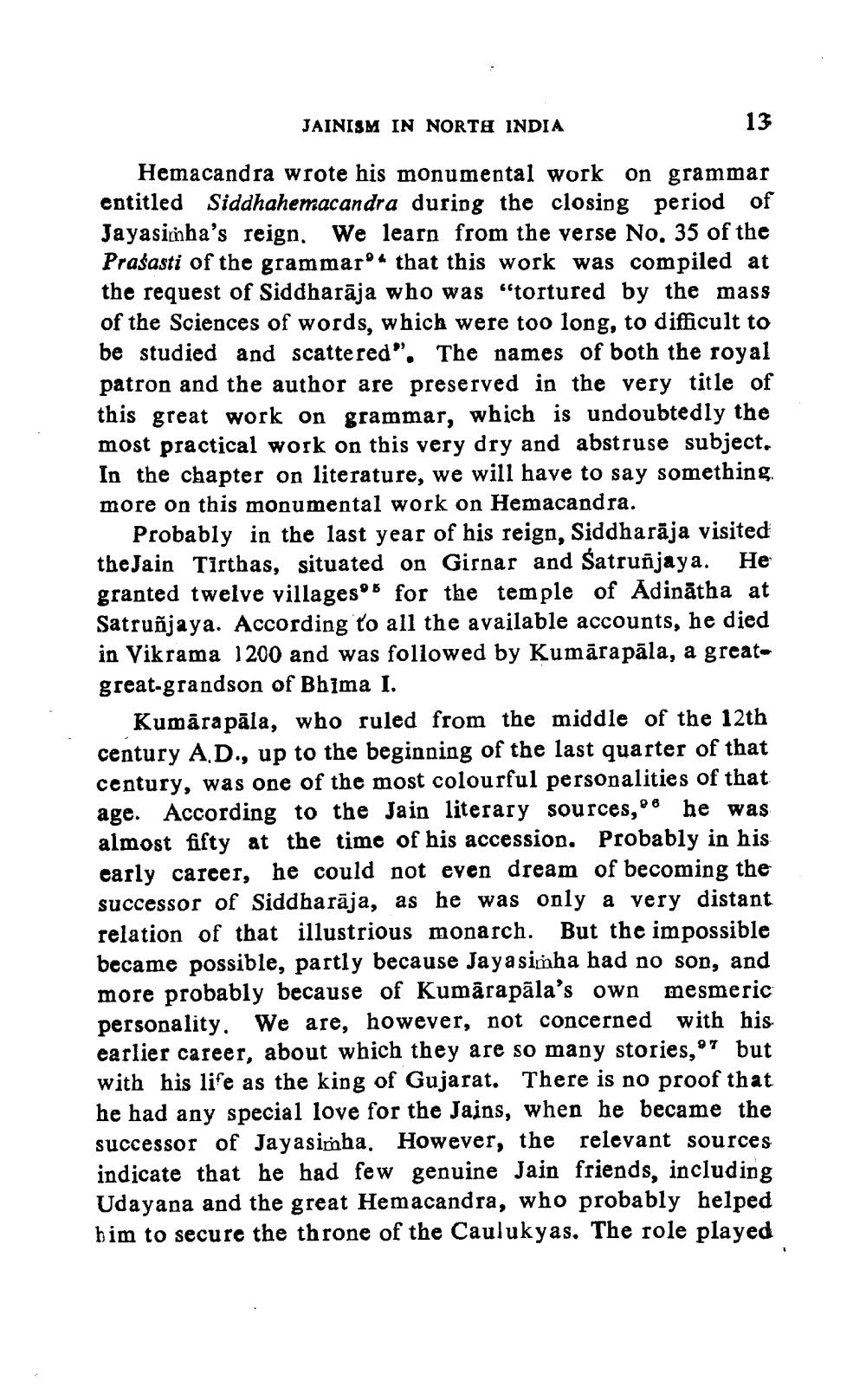________________
JAINISM IN NORTH INDIA
13
Hemacandra wrote his monumental work on grammar entitled Siddhahemacandra during the closing period of Jayasimha's reign. We learn from the verse No. 35 of the Prasasti of the grammar that this work was compiled at the request of Siddharāja who was "tortured by the mass of the Sciences of words, which were too long, to difficult to be studied and scattered". The names of both the royal patron and the author are preserved in the very title of this great work on grammar, which is undoubtedly the most practical work on this very dry and abstruse subject. In the chapter on literature, we will have to say something. more on this monumental work on Hemacandra.
Probably in the last year of his reign, Siddharāja visited the Jain Tirthas, situated on Girnar and Satruñjaya. He granted twelve villages for the temple of Adinatha at Satruñjaya. According to all the available accounts, he died in Vikrama 1200 and was followed by Kumarapāla, a greatgreat-grandson of Bhima I.
Kumārapāla, who ruled from the middle of the 12th century AD., up to the beginning of the last quarter of that century, was one of the most colourful personalities of that age. According to the Jain literary sources, he was almost fifty at the time of his accession. Probably in his early career, he could not even dream of becoming the successor of Siddharaja, as he was only a very distant relation of that illustrious monarch. But the impossible became possible, partly because Jayasimha had no son, and more probably because of Kumarapala's own mesmeric personality. We are, however, not concerned with his earlier career, about which they are so many stories," but with his life as the king of Gujarat. There is no proof that he had any special love for the Jains, when he became the successor of Jayasimha. However, the relevant sources indicate that he had few genuine Jain friends, including Udayana and the great Hemacandra, who probably helped him to secure the throne of the Caulukyas. The role played




